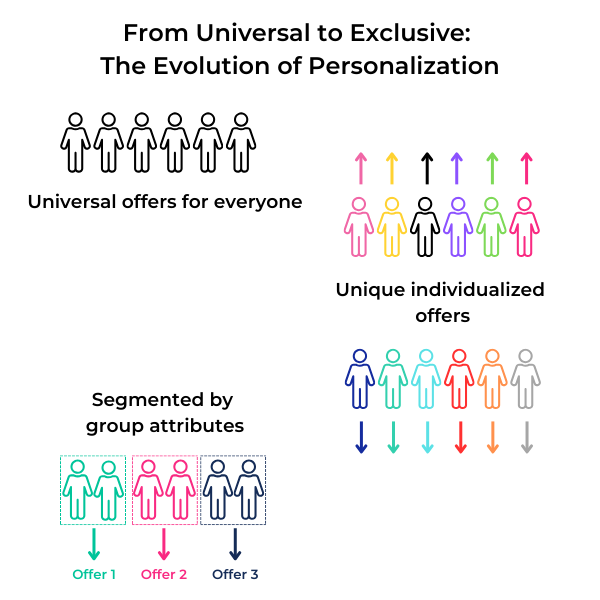In today’s fast-paced, highly competitive digital world, a robust and well-thought-out digital strategy is essential for businesses that want to thrive. Without a clear digital strategy, it’s easy to get lost in the noise of online marketing or waste resources on ineffective tactics. A winning digital strategy helps businesses focus their efforts, connect with their target audience, and ultimately achieve their business goals.
But what exactly makes a digital strategy “winning”? We’ll break down the key components that contribute to a successful digital strategy and how you can implement them to elevate your brand’s online presence.
Defining Clear and Measurable Goals
A strong digital strategy begins with clear goals. These goals should be specific, measurable, achievable, relevant, and time-bound (SMART). Whether your objective is to increase sales, grow your social media following, or improve customer retention, having a clear direction will guide your efforts and help measure success.
Why It’s Important: Without defined goals, it’s impossible to gauge success. It’s like trying to reach a destination without a map or GPS. Clear goals ensure your efforts are aligned with your broader business objectives.
How to Do It: Start by asking yourself: What do you want to achieve with your digital marketing efforts? Then break these goals down into smaller, actionable tasks. For example:
- Increase Website Traffic: “Increase organic website traffic by 20% over the next six months by improving SEO.”
- Boost Social Media Engagement: “Increase Instagram engagement by 15% over the next quarter by posting consistently and interacting with followers.”
Know Your Target Audience
Understanding your target audience is critical for tailoring your digital marketing efforts. Who are you trying to reach? What are their pain points? Where do they spend their time online?
Why It’s Important: Knowing your audience allows you to create personalized content, choose the right marketing channels, and increase your chances of converting leads into loyal customers.
How to Do It:
- Create Buyer Personas: A buyer persona is a semi-fictional representation of your ideal customer based on data and research. By identifying characteristics like demographics, preferences, and online behaviors, you can refine your strategy to meet their needs.
- Segment Your Audience: Segmenting your audience allows you to target specific groups with tailored messaging. You can segment based on criteria such as location, age, or purchase behavior.
Content Marketing Strategy
Content is king when it comes to digital marketing. Your content should educate, entertain, and engage your audience while aligning with your brand values. A solid content marketing strategy will help you create valuable content that resonates with your audience and moves them down the sales funnel.
Why It’s Important: Quality content establishes your brand as an authority in your industry and builds trust with potential customers. By providing valuable insights, you’ll keep your audience coming back for more.
How to Do It:
- Content Calendar: Create a content calendar to plan out blog posts, social media updates, email newsletters, and videos. Consistency is key, so having a schedule helps you stay on track.
- Diversify Your Content: Offer a mix of content types, such as blog posts, case studies, videos, infographics, and podcasts. This helps you appeal to different audience preferences and increases engagement.

Optimize for SEO (Search Engine Optimization)
SEO is one of the most critical components of a digital strategy. It ensures your website and content are discoverable by search engines, making it easier for potential customers to find you online.
Why It’s Important: Without proper SEO, even the best content can go unnoticed. With search engine algorithms constantly evolving, optimizing your site for SEO ensures you stay visible and competitive in organic search results.
How to Do It:
- Keyword Research: Identify high-ranking keywords relevant to your business and integrate them into your website, blogs, and product descriptions.
- On-Page SEO: Focus on optimizing your content, meta descriptions, image alt texts, and headings to improve your site’s relevance for search engines.
- Technical SEO: Ensure your website’s technical aspects, such as page load speed, mobile-friendliness, and secure HTTPS connections, are optimized for a smooth user experience.
Leverage Social Media Channels
Social media is a powerful tool to connect with your audience, build brand awareness, and drive conversions. Your social media strategy should align with your brand’s voice, values, and goals while engaging with followers in meaningful ways.
Why It’s Important: Social media allows for direct communication with your audience and builds a sense of community. It also offers valuable insights into your customer’s preferences and behaviors.
How to Do It:
- Choose the Right Platforms: Not all social media platforms will suit your business. If you’re a B2B company, LinkedIn might be more effective than Instagram. If you’re in fashion or entertainment, Instagram and TikTok could be better platforms.
- Engage with Your Audience: Respond to comments, engage in conversations, and share user-generated content to build strong relationships with your followers.
- Paid Social Advertising: Boost your reach and target specific demographics with paid ads on social media platforms.
Data Analytics and Performance Tracking
Data is the backbone of any digital strategy. Without tracking and analyzing your performance, you won’t know which tactics are working and which need adjustment.
Why It’s Important: By continuously analyzing data, you can identify trends, uncover opportunities, and optimize your efforts to achieve better results.
How to Do It:
- Use Analytics Tools: Tools like Google Analytics, social media insights, and CRM systems can help you track user behavior, engagement, conversions, and more.
- Monitor Key Performance Indicators (KPIs): Track the metrics that matter most to your business goals, such as conversion rates, customer acquisition cost (CAC), return on investment (ROI), and customer lifetime value (LTV).

Test, Learn, and Optimize
A digital strategy isn’t static. As trends evolve and technology advances, your strategy should evolve too. Continuous testing and optimization are key to staying ahead of the competition and ensuring that your digital marketing efforts remain effective.
Why It’s Important: Testing allows you to understand what works best for your audience, so you can refine your approach and improve your results over time.
How to Do It:
- A/B Testing: Test different versions of your campaigns to see which resonates better with your audience. This could involve testing email subject lines, landing page designs, or calls to action (CTAs).
- Continuous Optimization: Based on your test results, make data-driven decisions to optimize your campaigns and ensure you’re always moving toward your goals.
Content Personalization
Personalization is key to increasing engagement and driving conversions. Tailoring your content based on user behavior, preferences, and previous interactions helps create a more individualized experience that resonates with your audience.
Why It’s Important: Personalized content makes your audience feel seen and understood, which builds trust and strengthens relationships. It can significantly boost engagement rates, time spent on site, and, ultimately, conversions.
How to Do It:
- Segment Your Audience: Create personalized content for different audience segments based on factors such as location, behavior, or buying history.
- Dynamic Content: Use dynamic content features in emails or on your website to tailor offers or messaging based on individual user actions, such as past purchases or pages viewed.

Email Marketing Automation
Email marketing remains one of the most powerful tools in digital marketing. When combined with automation, it enables you to deliver highly targeted, timely messages to your audience with minimal effort.
Why It’s Important: Email automation saves time and ensures your messaging is relevant and timely. It helps nurture leads, build relationships with customers, and drive repeat purchases or interactions.
How to Do It:
- Set Up Drip Campaigns: Automate a series of emails that guide new leads through the buyer’s journey, providing them with valuable content and ultimately prompting them to take action.
- Segment Your Lists: Tailor your email campaigns to different customer segments based on their stage in the buyer’s journey, demographics, or past interactions with your brand.
- Personalized Subject Lines: Personalize email subject lines to increase open rates. Using the recipient’s name or referencing their previous behavior can be highly effective.
Mobile Optimization
With more people accessing content and making purchases via mobile devices, ensuring that your digital strategy is optimized for mobile is no longer optional; it’s essential.
Why It’s Important: A mobile-optimized website or campaign ensures a seamless experience for users, which can significantly improve conversion rates. A poor mobile experience, on the other hand, can lead to high bounce rates and missed opportunities.
How to Do It:
- Responsive Design: Ensure your website is responsive, meaning it automatically adjusts to different screen sizes and devices.
- Mobile-Friendly Content: Optimize your content for mobile consumption by keeping it concise, using larger fonts, and ensuring images load quickly.
- Test Across Devices: Regularly test your site across various devices to ensure it’s functioning as expected and offering an excellent user experience.
Influencer Marketing
Influencer marketing leverages the credibility and reach of individuals with established audiences in your industry. By partnering with influencers, you can increase brand awareness and build trust with your target audience.
Why It’s Important: Influencers can provide authentic, third-party validation of your products or services, which can greatly influence consumer trust and purchasing decisions.
How to Do It:
- Identify the Right Influencers: Look for influencers whose audience aligns with your target market. They don’t need to have millions of followers; micro-influencers with a highly engaged audience can be just as effective.
- Create Authentic Partnerships: Collaborate with influencers to create genuine, high-quality content that resonates with their audience and aligns with your brand values.
- Measure Impact: Track metrics like engagement, clicks, and conversions to evaluate the success of your influencer campaigns.

Paid Advertising Strategy
While organic efforts are essential, paid advertising can amplify your digital strategy and drive faster results. Platforms like Google Ads, Facebook, Instagram, and LinkedIn offer powerful targeting capabilities to reach potential customers.
Why It’s Important: Paid advertising allows you to scale your efforts quickly, target specific customer segments, and achieve immediate results. When managed effectively, it can provide a strong return on investment (ROI).
How to Do It:
- Define Your Budget: Determine how much you’re willing to spend and set daily or monthly limits to avoid overspending.
- Target Your Audience: Use the advanced targeting options on each platform to narrow down your audience based on demographics, interests, behavior, or location.
- Optimize Your Ads: Continuously test ad copy, visuals, and targeting to improve ad performance. A/B testing is key here to see what resonates best with your audience.
Customer Journey Mapping
Understanding the customer journey is crucial to providing a seamless and engaging experience that leads to conversions. By mapping the steps customers take from the awareness stage to the decision-making process, you can tailor your strategy to meet their needs at every touchpoint.
Why It’s Important: When you understand your customers’ journeys, you can create personalized experiences that guide them along the path to purchase. This helps increase satisfaction and reduce friction in the buying process.
How to Do It:
- Identify Key Touchpoints: Map out all the interactions your customers have with your brand, from initial discovery through post-purchase support.
- Segment Your Audience by Journey Stage: Different customers may be at different stages of their journey. Craft content and messaging that speaks to their specific needs at each stage (e.g., educational content for awareness, product demos for consideration, and testimonials for decision-making).
- Optimize for Each Stage: Make sure your website, content, and ads are optimized for each phase of the customer journey to ensure a smooth and consistent experience.
Technology and Tools Integration
The right technology and tools can help automate and streamline your digital strategy, making it easier to execute campaigns and track performance.
Why It’s Important: Using the best tools and platforms for your digital strategy allows you to save time, improve efficiency, and enhance your overall performance.
How to Do It:
- Marketing Automation: Use platforms like HubSpot or Marketo to automate your marketing efforts, from email campaigns to social media posts.
- CRM Integration: Connect your customer relationship management (CRM) system with your marketing automation tools to manage leads and customers more efficiently.
- Analytics Tools: Leverage analytics platforms like Google Analytics, Hotjar, or Tableau to monitor performance and track key metrics in real-time.

Mastering Your Digital Strategy for Long-Term Success
Building a winning digital strategy requires careful planning, consistent execution, and ongoing optimization. By setting clear goals, understanding your audience, creating valuable content, leveraging SEO, engaging on social media, and tracking your performance, you can develop a strategy that drives real results for your business. Remember, a digital strategy is a living entity always testing, learning, and refining to stay ahead in the digital landscape.


Recent Comments